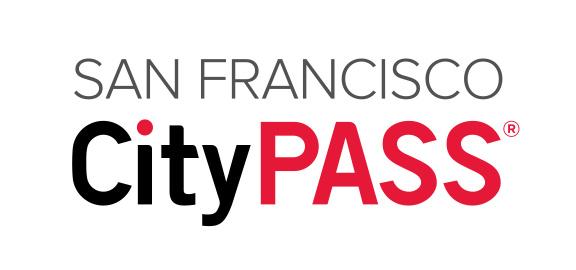San Francisco's cable cars are an iconic symbol of the city, and these historic transit vehicles have captured the imagination of visitors from around the globe. Introduced in the late 19th century, the cable cars have weathered natural disasters, political upheaval, and technological advancements to remain an integral part of San Francisco's cultural fabric. This article delves into the rich history of San Francisco's cable cars, tracing their origins, evolution, and current status.
San Francisco Cable Car History: The Beginning
In 1873, Andrew Smith Hallidie transformed urban transportation with his pioneering invention of the cable car. Hallidie's inspiration came from a particularly distressing sight: horses struggling to pull heavy loads up San Francisco's notoriously steep and slippery streets. Witnessing the animals' suffering, Hallidie, who had immigrated to the United States during the Gold Rush, decided to create a more humane and efficient mode of transport.
Utilizing his father's invention of "wire rope" cable, Hallidie envisioned a steam engine-powered system that would revolutionize city travel by using these cables to pull the cars along tracks embedded in the streets.
The First Cable Car Ride
On the early morning of August 2, 1873, at 4:00 a.m., Hallidie conducted the first trial of his cable car system on Clay Street. Although the trial was delayed by a day, the test was a success and received significant public approval. The following month, on September 1, 1873, the Clay Street Hill Railroad officially began public service. This new form of transportation provided a safer, more reliable way for residents to navigate the city's challenging terrain. Hallidie's innovative system made travel more efficient and paved the way for the development of a comprehensive transit network in San Francisco, influencing urban transportation systems around the world.
Expansion and Challenges
Following the success of the Clay Street Hill Railroad, several companies adopted Hallidie's system.
By 1890, San Francisco had a comprehensive network of cable cars, with companies like the Sutter Street Railroad and the California Street Cable Railroad extending lines across the city. This expansion laid 53 miles of track, covering major areas from the Ferry Building to the Presidio and Golden Gate Park.
The Great Earthquake of 1906
The 1906 earthquake and subsequent fires devastated San Francisco, severely damaging the cable car infrastructure. At this time, the electric streetcar, perfected in 1888, was gaining popularity due to lower costs and greater reach. Despite the destruction, some cable car lines were rebuilt, preserving their ability to navigate the city's steep hills.
Preservation Efforts
By the mid-20th century, the operational costs of cable cars led to calls for their removal. In 1947, Mayor Roger Lapham proposed eliminating the system. This sparked a public outcry led by Friedel Klussmann and the Citizens' Committee to Save the Cable Cars. Their efforts culminated in the successful passage of Measure 10 in 1947, ensuring the preservation of the Powell Street cable car lines.
San Francisco's cable cars are a Registered National Historic Landmark. The continued operation and maintenance of these cars remain in San Francisco's City Charter, highlighting their historical and cultural significance.
San Francisco's Cable Cars Today
San Francisco operates two main types of cable cars: the larger California Street cars and the smaller Powell Street cars. The California Street Cable Car Line features cars with open seating sections at each end and a closed middle section, operable from either end. In contrast, the Powell Street lines (Powell-Hyde and Powell-Mason) use smaller cars that require turntables to reverse direction at the line ends. Each type serves as a testament to the city's dedication to preserving this unique mode of transportation.
Cable Car Routes
The Powell-Hyde line, starting from Powell and Market Streets and ending at Aquatic Park, offers stunning views of landmarks such as Lombard Street and Alcatraz. The Powell-Mason line runs from Powell and Market to Bay and Taylor Streets, while the California Street line traverses from California and Market to Van Ness Avenue. These routes provide essential transit services and offer picturesque journeys through the city.
Frequently Asked Questions
What Is the Most Famous Cable Car in San Francisco?
The most famous cable car line in the Bay Area is the Powell-Hyde line, known for its scenic route that includes views of the San Francisco Bay, Lombard Street, and Fisherman's Wharf.
What Is the Difference Between a Streetcar and a Cable Car in San Francisco?
The primary difference lies in their operation. Cable cars are pulled along tracks by an underground cable powered by a central powerhouse, while streetcars run on electric power from overhead wires. Cable cars are particularly suited for San Francisco's steep hills, whereas streetcars cover flatter, broader areas.
How Fast Do San Francisco's Cable Cars Go?
San Francisco's cable cars travel at a top speed of approximately 9.5 miles per hour. This speed ensures a safe and scenic journey through the city's hilly terrain, allowing passengers to take in the beautiful views while comfortably navigating the steep streets.
How Many Cable Cars Are Currently in Operation?
Currently, San Francisco operates 40 cable cars across its three lines. This includes the Powell-Hyde line, the Powell-Mason line, and the California Street line. Each car is meticulously maintained to preserve its historic charm and ensure reliable service for both residents and tourists.
Living History
San Francisco's cable cars are a mode of transportation that doubles as living pieces of history. From Andrew Hallidie's pioneering invention to the community's efforts to preserve them, these cable cars symbolize the resilience and spirit of San Francisco. To experience this piece of history firsthand, consider visiting the city and riding one of these historic cars.
Get the most out of your visit to San Francisco by using CityPASS® tickets. You'll see the best attractions in San Francisco at a significant savings.
